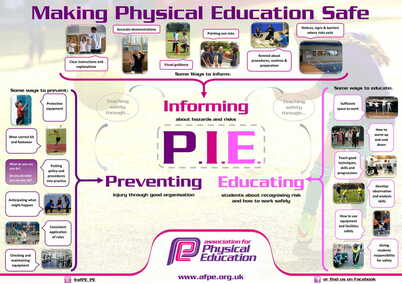Safety Related Resources
|
Making Physical Education Safe
|
|
SHAPE America Appropriate Practices
- 1.3.1 Activities are selected carefully and modified to ensure a safe learning environment for students. Emergency action plans are posted and practiced.
- 1.3.2 Activities are selected carefully to ensure that they match students’ ability levels and are safe for all students, regardless of ability level.
- 1.3.3 Physical educators maintain up-to-date first aid, CPR and AED certifications.
- 1.3.4. Facilities and equipment are maintained and inspected regularly for safety hazards.
- 1.3.6 Teachers ensure student safety by monitoring class closely.
- 1.6.3 Physical educators provide appropriate experiences for students with temporary medical limitations (e.g., a student with a broken arm can ride an exercise bike).
